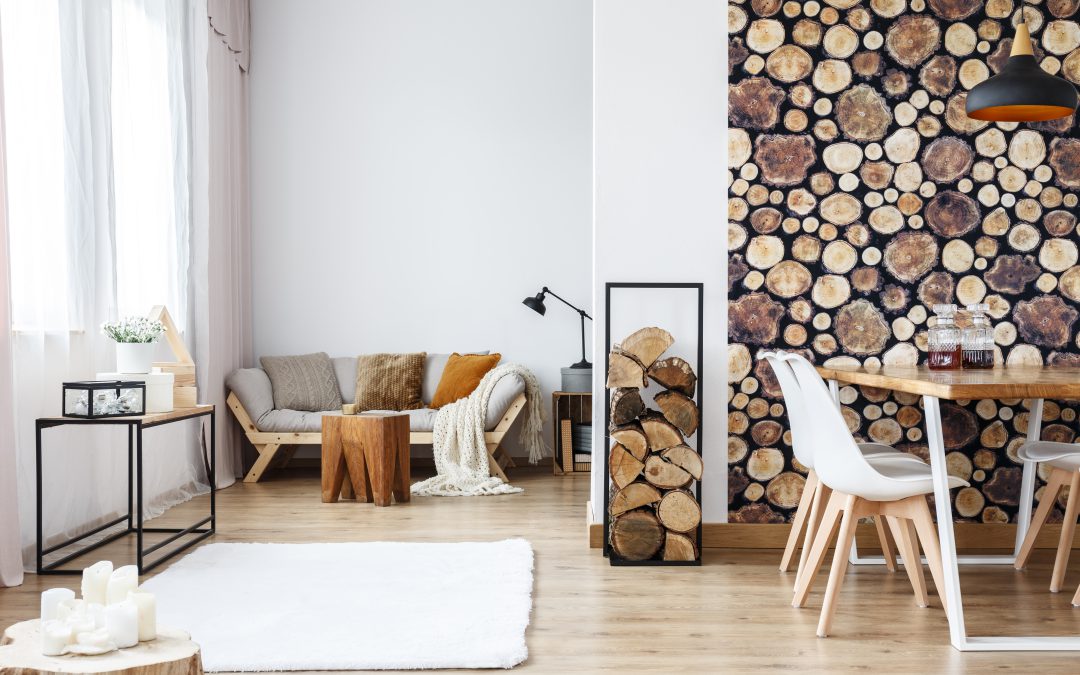By Ruchira Bahl
Associate Professor,Interior design
Pearl Academy

Interiorscapes, the practice of incorporating plants and natural elements into interior spaces focuses on bringing the natural and raw look of the nature indoors. Plants have always bestowed intangible benefits to mankind in one or the other ways. Indoor plants can provide a natural connection that people need, a high quality of indoor environment, and give the occupants the feeling of liveliness. Physically it contributes to cleaner and healthier air. Emotionally natural elements enable individuals to maintain a connection with nature, facilitating a seamless transition into a naturalistic setting thereby enhancing comfort and well-being, by creating a pleasant atmosphere. Interior space's aesthetics can be enhanced by the addition of plant scaping in the form of green sculptures, living walls, landscape courtyards, green dividers, planter boxes etc to provide an element of visual interest.
Interior landscaping has a positive impact of reducing stress, increasing efficiency, improving a person’s mood, and productivity. It can help lower air pollutants and maintain a cool temperature in indoor spaces. Poor indoor air quality leads to sick building syndrome as presence of volatile organic compounds, mould spores, poor ventilation led to several health issues. Incorporating nature into interior design removes unstable organic compounds and reduces the level of carbon di-oxide in the air. It can help lower air pollutants and improve the air quality of the interior space. Interiorscapes effects the microclimate of the space making it cooler or warmer. Indoor plants also have the potential to be good as passive sound insulators.
Creative trends for interiorscapes in residential spaces
Interiorscapes continually evolve as trends respond to shifts in design preferences, environmental awareness, and well-being considerations. Interior designers use the emerging trend of incorporating green components into indoor landscape designs because it holds aesthetic as well as environmental value.
Some of the recent trends for indoor landscape for residential interior spaces are :
Blur the boundaries

Nurturing a tangible and direct affiliation with nature grounds us and provides an essential pursuit for fostering holistic well-being. Landscaping the front, back, side or a central courtyard within a house is a perfect opportunity to create beautiful, unique, and intimate interior spaces. They are designed as flexible spaces for passive recreation and activity. Introducing elements of nature such as water, greenery, stone, wood, and plants into the built environment creates a richer composition and changes the overall dynamics of the built space merging the outdoors with indoors. Interior courts filled with indoor plants and trees create a tranquil and a peaceful atmosphere. These natural elements transform the perception of space and enhance the microclimate. Leafy palms, small ornamental trees, vines, shrubs, cacti, flowering plants, groundcover, water, pebbles etc can be used creatively for interior landscape courts, balconies, backyards, etc.
Curate the corners

Empty corners in the home can be dull and uninteresting spaces. Designing and styling these neglected nooks with plants have the potential to undergo a remarkable transformation into visually captivating and aesthetically enriching areas. Corners tend to have sharp angles, but landscape elements like plants, and softscape materials can soften these lines and create a more organic and inviting atmosphere. The strategic placement of pots, thoughtfully crafted plant stands, and artful display cabinets can add volume, colour, and texture, thereby creating an interesting contrast and a compelling interplay of visual elements livening up these corners. The right choice of plants can add a touch of elegance, freshness, and artistic expression to the space. Plants characterised with broad foliage or leaves, artistry of bonsais, and ornamental indoor palms are a judicious selection for these spaces. Adding complementary accessories such as polished rocks or delicate seashells can serve to elevate the overall decorative schema.
Suspend them from the ceiling

Where floor area is not sufficient, hanging the plants from the ceiling can be a smart option thereby imparting a practical and visually appealing solution. The arrangement of plants at varying heights introduces a dynamic layering effect that enriches the overall spatial composition with a captivating visual dimension. Execution of such suspended installations necessitates a selection of a secure structural supports to ensure stability, an appropriate growing medium to facilitate plant health, lightweight planter boxes for optimal weight distribution, ceiling hooks to sustain the arrangement, and, carefully curated assortment of hanging plants. The choice of trailing plants like spider plant, string of pearls, vines, ferns, creepers etc. enhances both the visual impact and practical feasibility of these suspended gardens. The intersection of ariel spatial utilization and aesthetic finesse results in an environment that becomes an integral facet of the overall interior narrative.
Going vertical with living walls

The contemporary trend of integrating vertical walls and partitions with vegetation represents a compelling stride in interior design. Departing from conventional choices like wallpaper and textured finishes, the emergence of green walls introduces a refreshing paradigm shift. Comprising living plants affixed in an upright configuration to wall surfaces or metal structures, these vertical installations evoke a renewed connection with nature within interior spaces. A living wall can be a good medium to reconnect with nature, can improve the indoor air quality positively encouraging health, wellbeing, and productivity. Green walls add visual interest by dynamic and playful use of color, textures, and patterns to create an element of interest in a room. Functionally versatile, these living partitions can serve as room dividers, partitions, or even movable walls, delineating distinct areas within a spatial layout. Green walls often feature low-growing plants such as groundcovers, compact shrubs, various flowering species, and aromatic herbs. Supported by a growth medium and a drip system, these plants are harmoniously integrated with the wall itself. Alternatively, ferns, vines, climbers, and creepers are used to create green walls, utilizing frameworks of metal, mesh, lattice, or freestanding trellises as a supporting framework. A further innovation in this domain is the incorporation of moss walls and frames, introducing an additional vertical living dimension to interior spaces. By seamlessly intertwining the vibrancy of living flora a harmonious coexistence with nature can be integrated into interior spaces.
Displaying as a center piece

Redefining tabletop aesthetics by using a sizable plant as a centerpiece instead of a floral arrangement in a vase is an innovative strategy to introduce live green plants. A dramatic potted plant that can double up as a focal point for a coffee table or dining table. For a heightened sense of dynamism in tabletop compositions, the selection of a trailing plant cascading down the center of the table imparts a compelling visual rhythm. This choice infuses the arrangement with an organic movement that engages the eye and lends a captivating liveliness to the setting. Opting for small-scale plants like succulents, aloe vera, snake plants, and ferns introduces a sophisticated interplay of textures, shapes, and colors, all of which contribute to the overall composition. These harmoniously blend within the confined space of a tabletop, ensuring an enduring timeless visual appeal.
Embracing plants as focal points in table styling crafts an ambiance where nature's aesthetics converge with design finesse.
NASA recommends some air purifying plants for interior spaces which improves the indoor air quality. These plants are capable of absorbing pollutants including formaldehyde, benzene, and trichloroethane that are emitted in confined spaces by objects and human activity. Some of the air purification plants recommended by NASA are peace lily, English ivy, Snake plant, Money Plant, Aloe vera, Boston fern, Spider plant, Rubber plant etc. These plants are easily available and can be brought from any local nursery.
In a fast-paced and digitally driven era, where the demands of modern existence often led to detachment from the natural realm, nurturing a tangible and direct affiliation with nature becomes an essential pursuit for fostering holistic well-being. In conclusion, the act of establishing a direct connection with nature transcends mere sensory experience. Interiorscapes serves as a foundational pillar of well-being, imbuing life with meaning, balance, and a deeper appreciation for the world around us. By embracing this primal connection, individuals can navigate the complexities of modern existence with a heightened sense of rootedness and a profound understanding of their place within the natural order.












